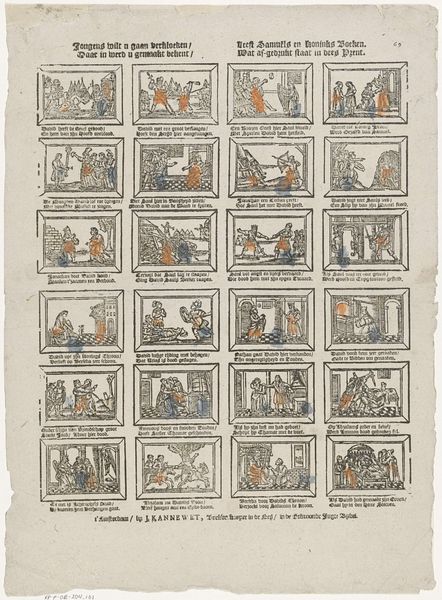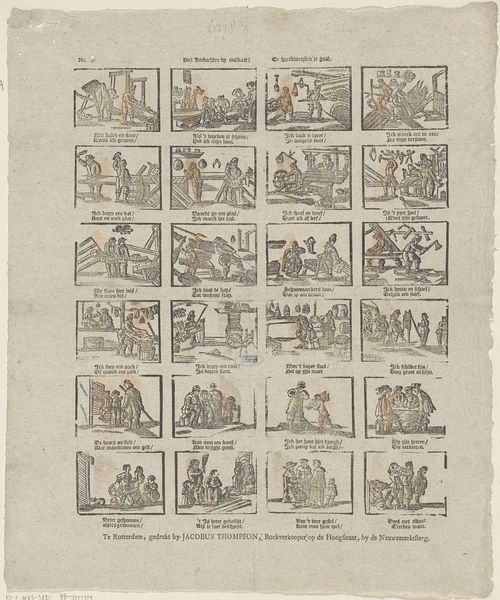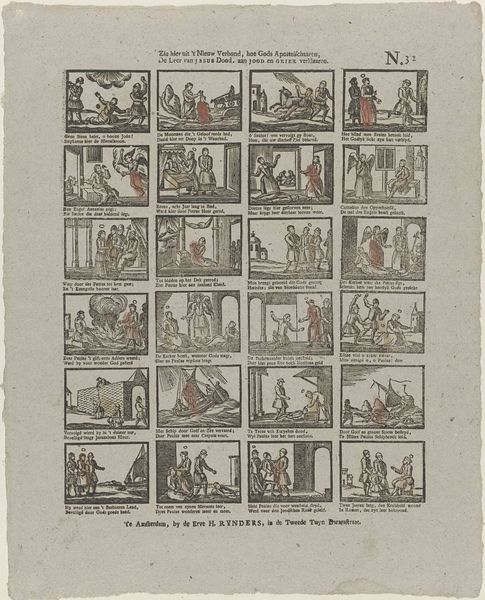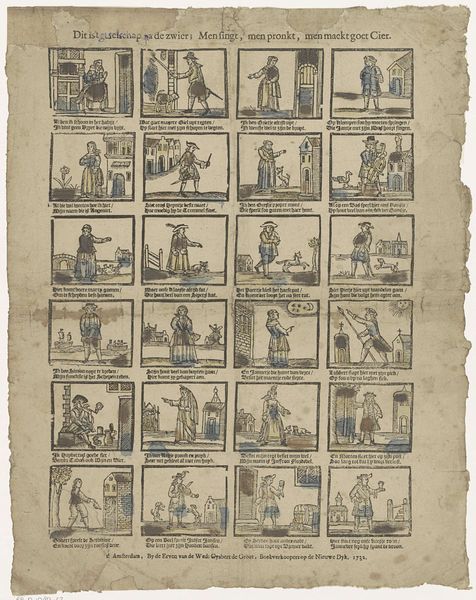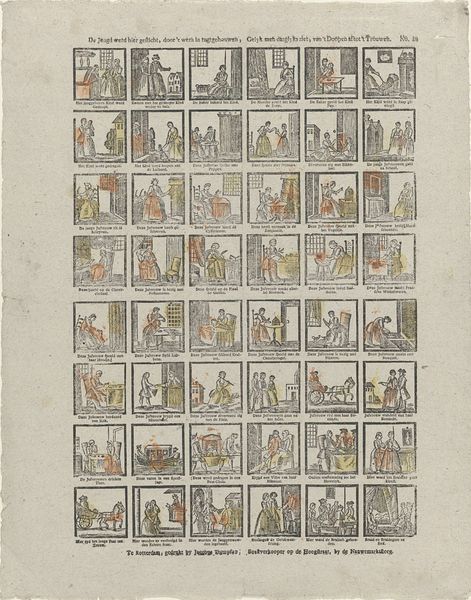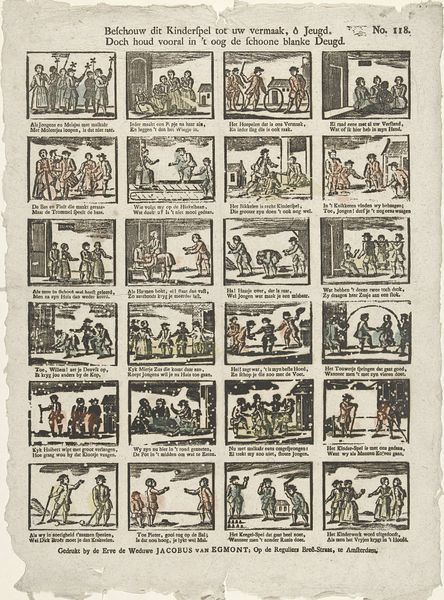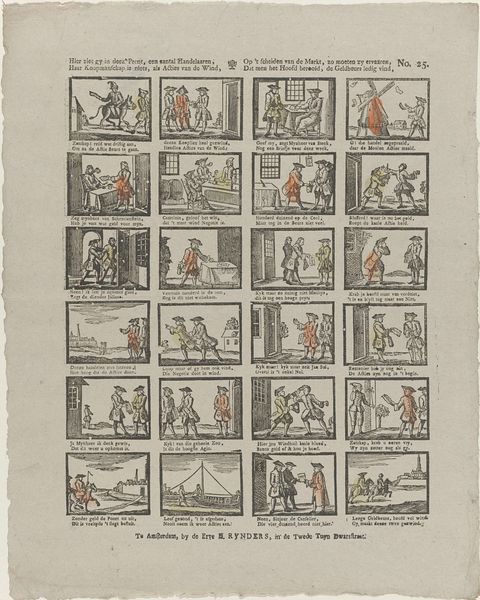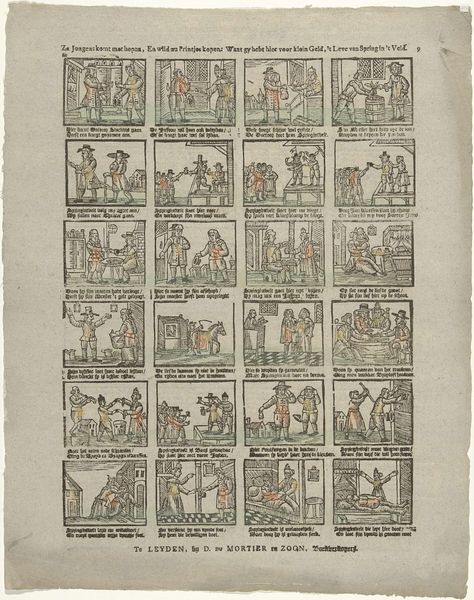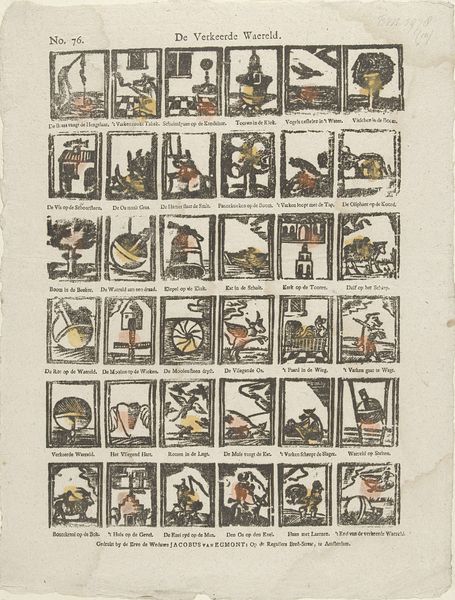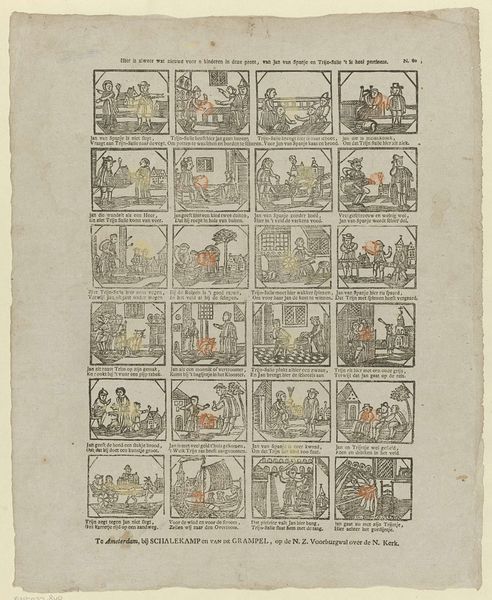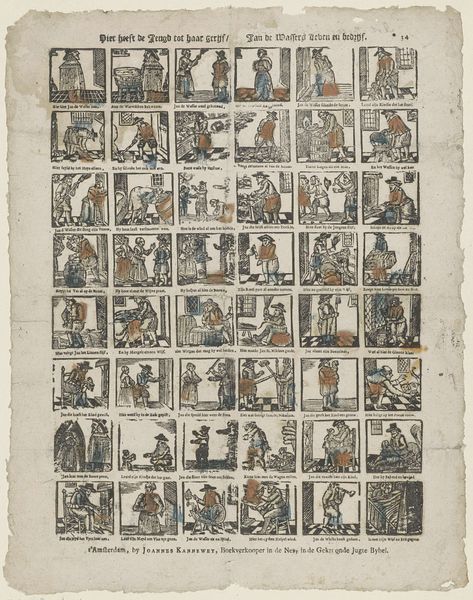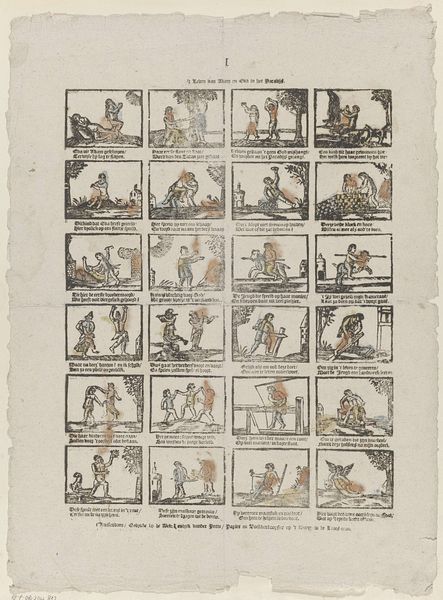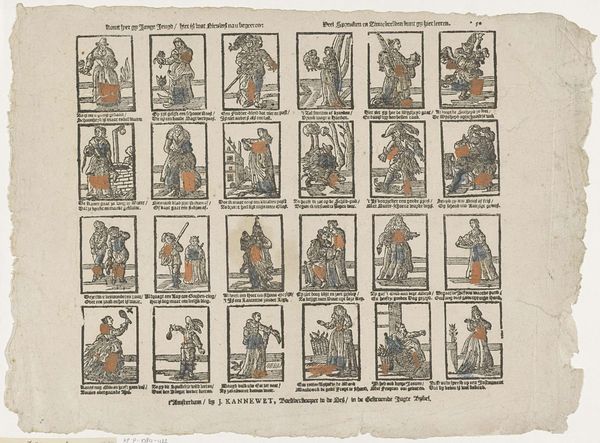
Urbaan en Isabel, verbonden aan den ander, Zyn eerst gescheiden toen vereenigd met elkander 1761 - 1804
0:00
0:00
print, engraving
#
narrative-art
#
comic strip
#
dutch-golden-age
# print
#
comic
#
pen work
#
sketchbook drawing
#
genre-painting
#
engraving
Dimensions: height 405 mm, width 325 mm
Copyright: Rijks Museum: Open Domain
Editor: This print, “Urbaan en Isabel, verbonden aan den ander, Zyn eerst gescheiden toen vereenigd met elkander,” created between 1761 and 1804, is a narrative series of small engravings, almost like an early comic strip. I'm immediately drawn to the sequential arrangement; it feels very methodical and contained. What do you see as significant in this visual structure? Curator: The grid format is certainly critical. Each framed scene, while visually distinct in its figuration and setting, is rigorously contained by the geometric structure. We might consider how the artist’s control over composition manifests. Are some scenes more visually dynamic or complex than others? Is there a rhythm established by alternating color or density of line? Editor: I see some panels are much more sparse than others, almost like pauses in the narrative. The colors are quite muted as well, mainly washes of yellow and red. Does this point to any particular intent? Curator: Color, or rather the absence of vibrant color, might draw our attention to the foundational element of line. Notice the quality of the engraving itself, the precision of the line work in defining forms, delineating space, and conveying emotion. How does this disciplined use of line serve the overall narrative effect? Does it emphasize a clarity or perhaps suggest an underlying emotional restraint typical of the period? Editor: The close examination of these structural choices certainly reveals the craftsmanship behind this comic, emphasizing restraint over outright drama. Thanks for that! Curator: Indeed! Focusing on form illuminates so much about intent. The formal elements of the composition, not just the anecdotal details, become crucial carriers of meaning.
Comments
No comments
Be the first to comment and join the conversation on the ultimate creative platform.
